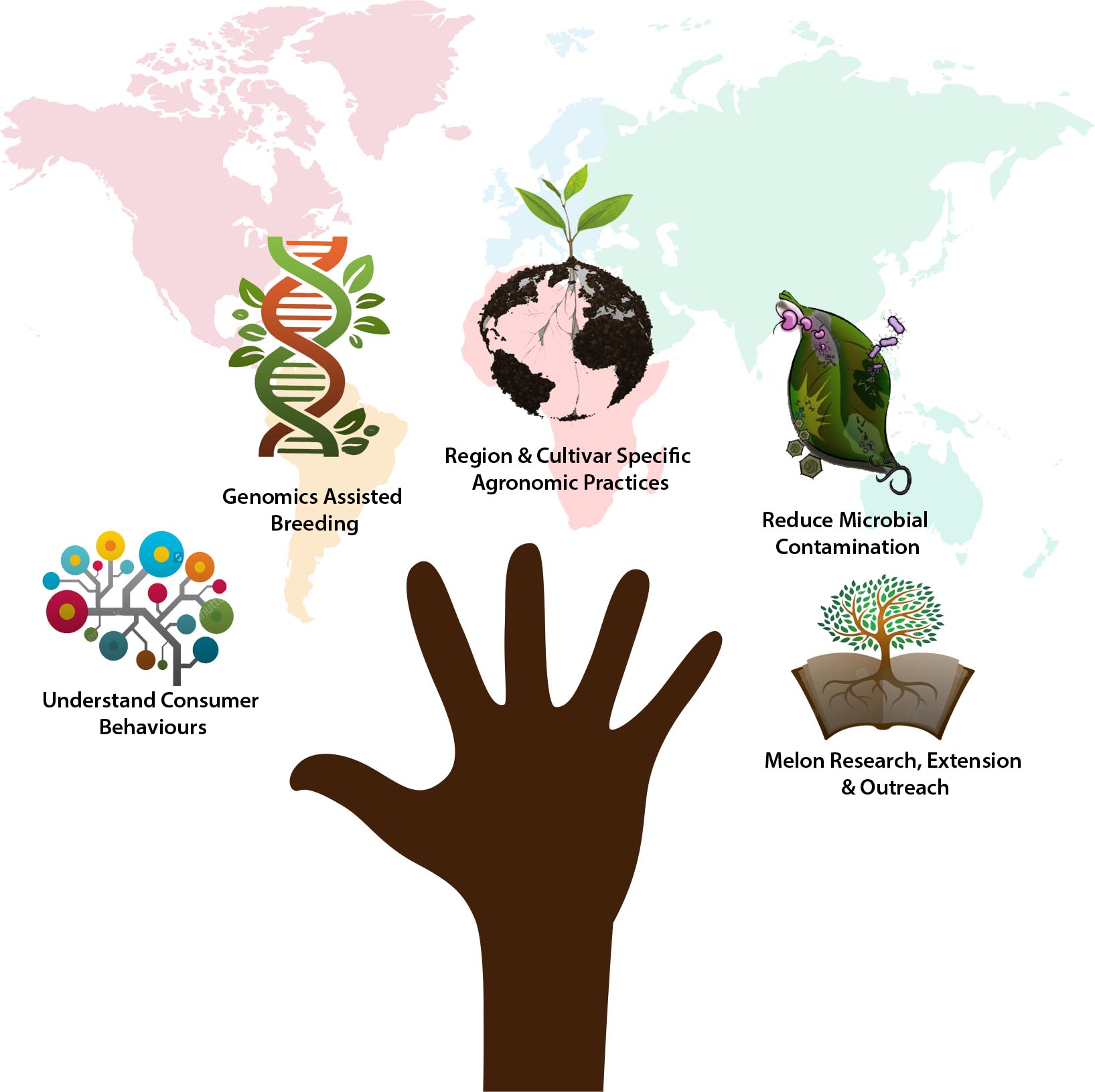
The national survey of major stakeholders (consumers, producers, marketers, and retailers) demonstrated that when purchasing melons, consumers prioritized flavor, nutrition, safety, sweetness, texture, and color. Stakeholder input as well as our ongoing research and outreach activities showed that the critical needs of the melon industry include improving production of safer and highly nutritious melons, enhancing microbiological safety and exploiting the genetic diversity of melons.
Mission Melon is aimed at accomplishing 5 consumer-driven objectives:
To analyze consumers’ melon purchase & consumption behaviours
We hypothesize that new melon varieties bred to be safer, healthy, and flavorful will result in higher consumer acceptance and willingness-to-pay. We use consumer input to develop safe and healthy flavorful melons. The study includes use of biometric responses and discrete choice experiments in the Human Behavior Laboratory
To develop cultivars that address producer and consumer needs
To develop region- and cultivar-specific agronomic practices and technologies
To develop pre-harvest and post-harvest strategies to minimize microbial contamination
To establish a center of excellence in research, extension and outreach for melons
